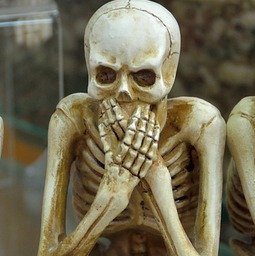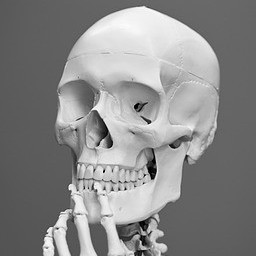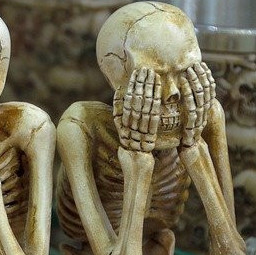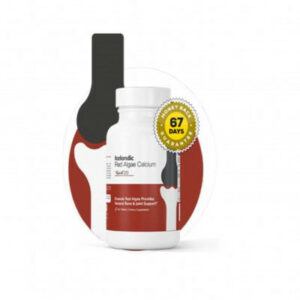
How often do you think about your bone health? If the thought has never even entered your mind, perhaps now is a good time to start.
As you get older, your bone health will deteriorate if you do nothing to stop this process. The stronger your body´s framework, the better it is for you to reduce your chances of painful bone breaks.
You are never too young or too old to protect your bones heath. This post shows you some lifestyle choices that can help keep your bones healthy.
Bones are the supporting structure of the body. They store calcium and protect your internal organs. It comes as no surprise that bones grow rapidly during childhood and adolescence.
Girls reach bone density by age 18 and boys by age 20. It is vital to have strong and healthy bones during the bone development years.
A closer look at the human bone
A child is born with 300 bones, and an adult has 206. As a child grows and develops, some of their bones will fuse. Therefore, there is a reduction in bones. Throughout your life, your bones are constantly growing or replenishing. Bone is a living, growing tissue that is both flexible and strong.
There are two types of bones: Cortical bones and Trabecular bones.
Cortical bones are hard and dense. They are your structural bones. Trabecular bones are soft and spongy, and they can be found inside large bones such as the pelvis, ribs, and skull.
Makeup and structure
The general structure of your bone is a combination of proteins known as collagen and calcium phosphate. Your bones require calcium for absorption and can metabolize 600 international units daily.
Osteoblasts are bone-forming cells and play a key role in bone growth, repair, and maintenance. A decrease in osteoblasts leads to osteoporosis (a disease known to cause brittle bones and increase your chances of fracture and breakage as your bones lose density. Bone density is the amount of bone tissue in your bones.
The many functions of the bones
- They support your body and aid in movement.
- Bones hold your body upright and keep it from collapsing. Your posture depends on your bones.
They protect your internal organs.
Bones protect your delicate internal organs and keep them safe from punctures and other forms of injuries. Your heart, lungs, organs, and skull are protected by bones.
They produce blood cells.
- Your bone marrow (pelvis, sternum in adults, and arms and thighs in children) produces platelet-rich and white blood cells inside your bones.
- Platelets help your blood clot. The red blood cells carry oxygen to the organs, and the white blood cells fight off infections.
They store and release fat.
- Yellow marrow bones found in the central cavity of long bones produce cartilage, fat, and bone. The central cavity of long bones (yellow marrow), along with bone marrow (red marrow), acts as a storage site for fat.
- Bones make sure that the blood has the right amount of fat levels it needs and releases them when your body needs them.
They store minerals
- Your bones also store vital minerals when their levels in the blood are too high and release them when the levels are too low. Calcium and phosphorus make up the human bones. Bones release these minerals to the body when the body needs them.
- Bones also store magnesium and fluoride. The minerals that produce bones also make them solid. Bones store minerals to help regulate the balance of calcium levels in the blood. The bone marrow is a metabolically active organ. It helps store energy, endocrine functions, and bone metabolism.

Some types of bone diseases/loss
Paget´s disease
It is an excessive breakdown and regrowth of bone. As bones regrow too quickly, they are bigger and softer than usual. Bones may be misshapen and can be easily fractured. This condition usually affects one or a few bones.
Osteoporosis
Brittle and weak bones
Osteogenesis Imperfecta
Brittle bone disease can occur for unknown reasons.
Low bone density
Cancer
Other bone diseases:
Occur through genetics, poor nutrition, or problems with the rate of bone growth or rebuilding.
Interesting Bone Facts
There are 106 bones in your hands and feet. 54 in your hands, fingers, and wrists, and 26 in your feet.
Each year, 10% of your bones are replaced by your body.
You get a new skeleton every 10 years (as the mineral content in bones is removed, you get a new skeleton. This process takes 10 years.
Usually, broken bones can take up to 12 weeks to heal.
Bones can break easier in people with osteoporosis from simple actions such as sneezing, hugging, or bumping into furniture.
There are over 2 million bone fractures each year in the US.
5% to 15% of all fractures result in impaired healing.
Hip fractures (though less frequent) are the most devastating because 20% of those who suffer from them can die within 6 months.

Causes of bone loss
Who is most likely to suffer from bone loss?
People with a vitamin B deficiency are associated with a decreased number of osteoblasts.
Smokers: smoking harms the absorption process of calcium, which your bones need. Women smokers are at higher risk, especially if they are in menopause.
Women with low estrogen are at high risk. (Estrogen enables bones to build calcium). Menopausal women are at risk of osteoporosis.
Thyroid problems: an overactive (para) thyroid and adrenal glands.
People with eating disorders and who are underweight may have weakened bones.
People with low calcium intake.
People with hereditary bone loss diseases.
What are some healthy lifestyle changes that keep your bones healthy and strong?
Can you slow down and even prevent bone loss? Yes, it is possible. Here are a few lifestyle changes that can help you to do just that.
Limit alcohol
Too much alcohol can affect your bones’ health and healing capabilities. Alcohol also disrupts hormone regulation, production, and vitamin absorption.
Alcohol weakens your bones and decreases new bone growth.
Limit caffeine
If you want to keep your bones strong, limit high levels of caffeine. High levels of caffeine can decrease the amount of calcium absorption in your body and increase the risk of bone loss.
Get some sun
Get enough sunlight. Go for walks, and spend more time outdoors if you can.
Supplements
If you cannot get enough vitamin D from the sun (because of the climate), consider vitamin D supplements, especially after 50. Vitamin D helps you absorb calcium in foods. Also, Potassium, vitamin K, vitamin A, and magnesium. Vitamin C helps promote the synthesis of collagen in your bones.
Advertisement
Find out how redalgaecalcium can strengthen your bones
Diet
Consume adequate amounts of calcium-rich foods (milk, yogurt, cheese, Kefir, fortified plant-based beverages). A diet high in vitamin K, dark leafy vegetables, broccoli, Brussels sprouts, fruit, legumes-beans, peas, lentils, nuts, seeds, whole grains, and fish. Protein helps to build muscles, which help keep your bones strong. Consume enough protein by adding meat to your diet.
Exercise
You need to stay active for strong, healthy bones. Some of the best exercises to improve bone health include running, walking, hiking, jogging, climbing stairs, and low-impact aerobics to keep your bones strong.
If you have a medical condition and a high-intensity workout is not recommended by your physician, stretching exercises like Yoga and Tai Chi can greatly improve your balance and coordination and lower your risk of falling and breaking your bones.
Weight training
The benefit of weight training is that it makes your bones denser and stronger. Adults who engage in weight training and exercise can increase bone density by 2-8% annually.
Disclaimer: Please consult a physician before you start any exercises to prevent injuries.
Conclusion
Diet, exercise, essential vitamins, and weight training play a crucial role in minimizing bone loss. They also strengthen your muscles and reduce your chances of a fall that could result in a bone fracture. By building strong bones, you give your body the strong foundation it needs for the rest of its life.
Make the decision now to preserve and protect your bone health.
You may like
Stop Dancing with Frustration and Lose Weight Quickly and Safely
Sleep Deprivation Effect on Health | Elevate Healthy Lifestyle Choices
The ugly side effects of stress and what you can do about them | Elevate Healthy Lifestyle Choices
Journaling for Stress Relief | Elevate Healthy Lifestyle Choices


I have broken a bone or 2 in my life and I am still relatively young, so I`ve never thought of bone health, to be honest, but this article really got my attention. I will also be limiting the amounts of caffeine I consume on a daily basis.
This article taught me a lot. Thank you for sharing this information with us.
Thank you, Johnny, for your kind compliment.
We, at Elevate Healthy Lifestyle Choices are on a mission to inform as many people as possible about health and wellness issues they may face in every area of life.
We are grateful that you are now taking the steps necessary to maintain not only, your bone health, but your overall health as well.
We wish you all the best!
Cheers,
Admin